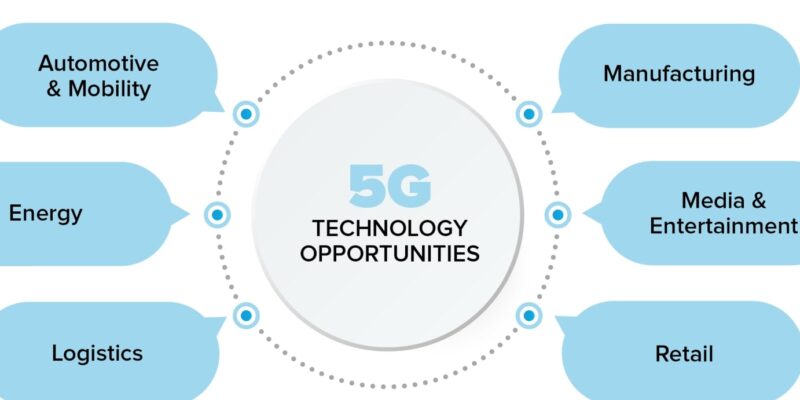The fifth generation of mobile communications, 5G, is raising high expectations, but infrastructure expansion is not yet complete. An adaptable and convergent network is badly needed, argues Jürgen Hatheier, Chief Technology Officer, EMEA, Ciena, in a guest post.
Bandwidth can only be replaced by one thing: more bandwidth! That’s one of many service providers’ promises to attract new customers. However, bandwidth alone is by no means the most important factor for users when it comes to the Internet. A Ciena survey conducted in Germany shows that 35 per cent of consumers name a stable connection as the most important technical aspect. This means that stability is even more important than security and data protection, which only one in four (26 per cent) consider the most important aspect.
This is not surprising given that working from home has become the norm for many workers. It is possible to reduce bandwidth consumption by simply turning off video on conference calls and actively participating. On the other hand, having to keep dialling in because of interruptions in the Internet connection, even if conferences could be displayed in the highest video resolution, causes more dissatisfaction among users than a reliable connection to the network without video. Bandwidth is a key factor to allow for the overhead that a stable line requires without sacrificing the user experience. This shows that the way we use the Internet is changing and, as a result, so are expectations and demands.
An important factor that should ensure fast and reliable connections to the network, especially in Germany, is the expansion of the 5G network. While the fifth generation of mobile communications promises significant improvements in network performance and user experience, important improvements to the underlying network infrastructure are still needed before users reap the full benefits. Finally, some exciting applications enabled by 5G will require higher bandwidth and lower latency.
In this context, the new wireless standard offers the performance to enable modern and bandwidth-intensive services on the one hand. However, on the other hand, it is still dependent on wired networks and outdated infrastructure. This regularly negates the inherent benefits. Consequently, an adaptive network framework must be in place to support and accommodate the compute-intensive and latency-sensitive requirements.
The edge cloud also plays a critical role, as 5G deployment requires an approach where cloud resources are effective “closer” to end-users and systems at the edge of the network. As demand for 5G increases and adoption accelerates, a 5G and edge cloud ecosystem is emerging that must evolve to enable the deployment of intelligent and future-proof networks.
High demand for 5G connectivity
The demand for the new generation of mobile communication is unbroken. In the survey conducted by Ciena, more than half (57 per cent) of German consumers surveyed said they would be willing to pay more for internet access if it was 5G-based than they are paying today. Additionally, 54 per cent believe they will have better access to the Internet when 5G becomes widely available. This underscores consumers’ desire for faster speeds, ultra-low latency, and reliable connectivity.
Compared to the existing, older 4G networks (LTE), 5G will offer up to 100 times higher data throughput, 100 times more connected devices, 10 times lower latency times, 1000 times more data volume and perceived network availability of 99.999 per cent. The new cellular standard is essential as we increasingly rely on digital connectivity to be productive at home, at work, at school and in social interactions.
As working life evolves towards a hybrid model, people want to reap the benefits of great connectivity no matter where they are or which devices they are working on. However, it must be ensured that the underlying infrastructure allows this.
The Importance of the Edge Cloud
The challenge is that today’s consumers and businesses have completely changed the way consumers and businesses access and use network services. The home has now become the hub for work, school and entertainment. There are now more users and devices on the home network, all accessing different applications from the cloud simultaneously.
Therefore, a new generation of networks is needed. For example, the fibre optic connections (FTTH) market has steadily increased in recent years. This trend is driven by the accelerated adoption of IoT devices and growing demand for online gaming, high-definition video streaming, and, more recently, distance learning and remote work.
Also, the rise of remote working has prompted companies to change their work processes. This impacts the services businesses need. Therefore, the traditional distribution of access to the Internet is gradually shifting from network-based and private lines to fixed broadband connections, public IP, direct Internet access and cloud-based network and security services.
5G is of paramount importance because it is the new mobile communications standard that will enable an unlimited number of new services and applications, which would not be possible without the edge cloud. It’s about reliable bandwidth for thousands of smaller data centres deployed as close as possible to where content is created, consumed and processed by people and systems. The edge cloud will help reduce latency and transportation costs and accommodate our changing digital lifestyle.
However, there are concerns that new 5G sites and new edge computing data centres could put additional pressure on the environment. However, thanks to technological advances, it is possible to reduce power consumption while achieving unprecedented network performance significantly. Let’s take the advances in optical transmission technology as an example. With this technology, a bit of data travels through the network using only 10 per cent of the energy that it would have required 10 years ago.
Convergence of networks
The networks of today and tomorrow need convergence – not just of business, mobile and home networks, but multi-level convergence that integrates IP and Ethernet through an optimized optical layer. This results in less hardware and lower costs for the network operator. These networks must also be made up of components that can be deployed together or independently as required. This includes optimized routing and end-to-end, closed-loop automation that leverages advanced analytics and intelligence.
Therefore, realizing the benefits of 5G for all involved requires a network that uses open APIs and network interfaces and is designed for interoperability and performance telemetry. However, this is not the case today.
Furthermore, real-time network virtualization is only possible with best-in-class analytics across the entire multi-layer infrastructure. This is another way to reduce operational costs further, minimize hardware dependencies, and ensure faster updates and upgrades.
Conclusion
Today’s existing metro and edge network architectures will hardly be able to provide new services efficiently and profitably for the providers. For this purpose, the networks must be further developed in the interest of modern working and living methods of users and network operators. If network operators implement this evolution, all users will benefit from modern and innovative network services, regardless of where they work, study or are entertained.




















Comments